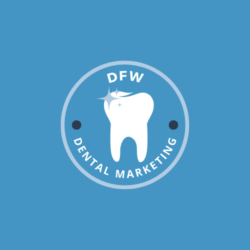
PPC, or pay-per-click advertising, is a powerful tool that can help dentists drive more traffic to their practice. By targeting specific keywords and demographics, dentists can reach potential patients who are actively searching for a dental practice like theirs. By creating targeted ads that appear at the top of search engine results pages, PPC can also help dentists reach their ideal patients and increase their patient base.
In this blog post, we will explore how PPC for dentists can be used to drive more traffic to your practice and ultimately increase your patient base.
- The first step in creating a successful PPC campaign for dentists is to determine your target audience. This includes identifying the demographics of your ideal patients, such as age, gender, location, and income level. For example, if someone is searching for a “dentist near me” or a “dental implant specialist”, your ad will appear at the top of the search results, making it more likely that they will click on your ad and visit your website. Once you have a clear understanding of your target audience, you can begin to research keywords that are relevant to your practice. These keywords should be specific to your practice and services, such as “dental implants” or “teeth whitening.”
- Once you have identified your target audience and keywords, it’s time to create your ad. Your ad should be concise and to the point, highlighting the services you offer and the benefits of choosing your practice. It’s also important to include a call-to-action (CTA), such as “Book an appointment today” or “Learn more about our services.”
- Once your ad is created, it’s time to set your budget. PPC campaigns can be expensive, so it’s important to set a budget that is realistic and in line with your practice’s goals as you will be paying for each click or day that your ad is shown. For example, if your goal is to increase patient appointments, you may want to allocate more of your budget towards lead generation campaigns.
- One of the biggest advantages of PPC advertising is that it allows you to reach a large audience quickly. With the right targeting and budget, your ad can appear at the top of search engine results pages (SERPs) for your selected keywords. This increased visibility can lead to more clicks, website visits, and ultimately, new patients.
- Another advantage of PPC advertising is that it allows you to track and measure your results. With Google Analytics and other tracking tools, you can monitor your ad’s performance and adjust your strategy as needed. For example, if you notice that your ad is not getting enough clicks, you may need to adjust your targeting or ad copy.
- In addition to search engine ads, PPC campaigns can also include display ads and social media ads. Display ads are banner ads that appear on websites and social media platforms, while social media ads are sponsored posts on platforms like Facebook and Instagram. These types of ads can be especially effective for reaching potential patients who are actively engaged on social media.
- Once your ads are live, you can track their performance and make adjustments as needed. This includes monitoring your click-through rate (CTR), which is the number of times your ad was clicked divided by the number of times it was shown. A high CTR indicates that your ad is resonating with your target audience and is likely to be driving more traffic to your website.
- Another important metric to track is the conversion rate, which is the number of people who clicked on your ad and then filled out a form or made an appointment. A high conversion rate indicates that your ad is effectively converting clicks into new patients.
- One of the best ways to optimize your PPC campaigns for dentists is to use landing pages. A landing page is a specific webpage that visitors are directed to after clicking on your ad. This page should be tailored to the specific service or offer that your ad is promoting, and should include a clear CTA. By using landing pages, you can increase the chances of converting leads into patients.

In conclusion, PPC advertising can be a powerful tool for driving more traffic to your dental practice. By targeting the right audience and keywords, creating compelling ad copy, and utilizing landing pages, you can increase your visibility, reach new patients, and ultimately grow your practice. However, it’s important to remember that PPC campaigns require ongoing monitoring and optimization to be effective. By regularly analyzing your campaign’s performance, you can make adjustments and tweaks to improve your results and get the most out of your PPC budget.
Don’t miss out on the opportunity to drive more traffic to your dental practice with PPC. Contact us today at DFWDentalmarketing.com and let our team of experts help you create a comprehensive digital marketing strategy that will take your practice to the next level.
Luce Media also prides itself on its transparency and communication. We provide regular monthly reports and updates to our clients, keeping them informed about their campaigns’ performance and any changes made. Plus, everyone from the CEO down makes themselves available to answer any questions or concerns our clients may have.
Finally, Luce Media is dedicated to providing excellent customer service. We understand that every dental practice is unique, and work closely with our dental clients to understand their specific needs. If you would like a free analysis of how your PPC advertising campaigns are working, call us at (469) 907-1057 or email us at [email protected].

